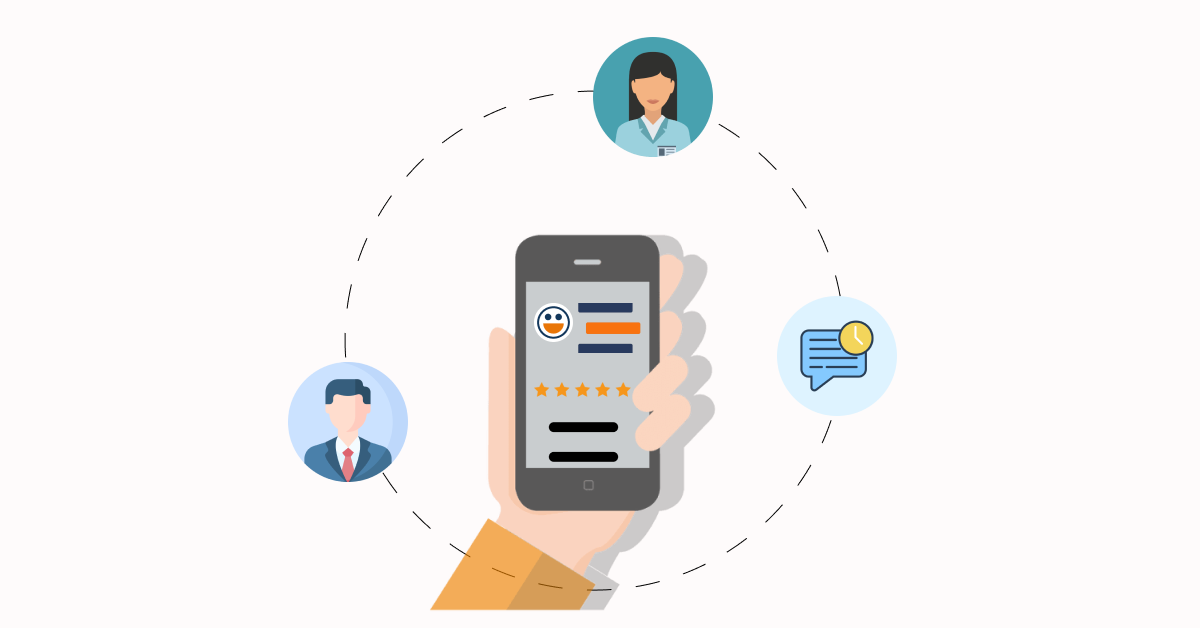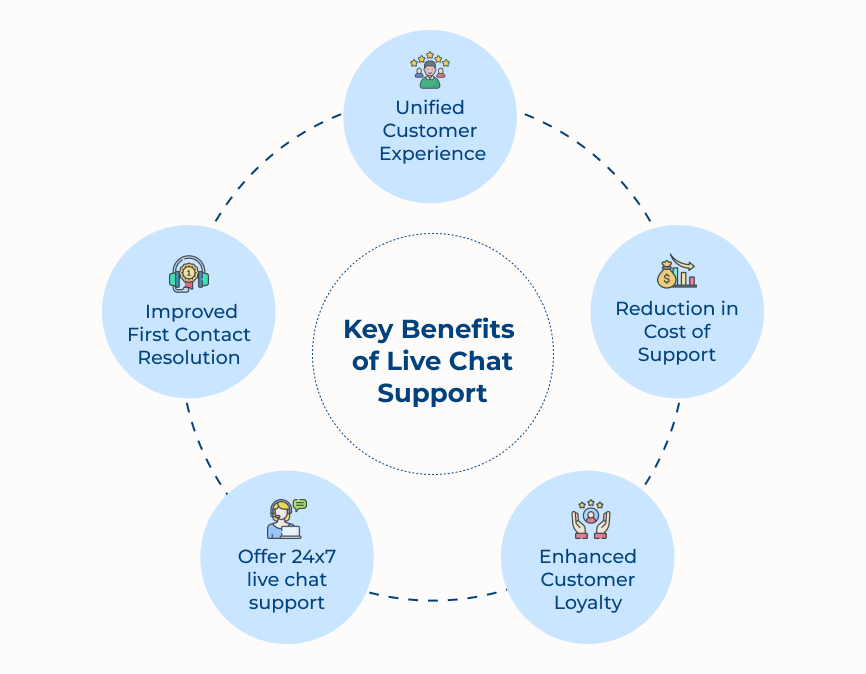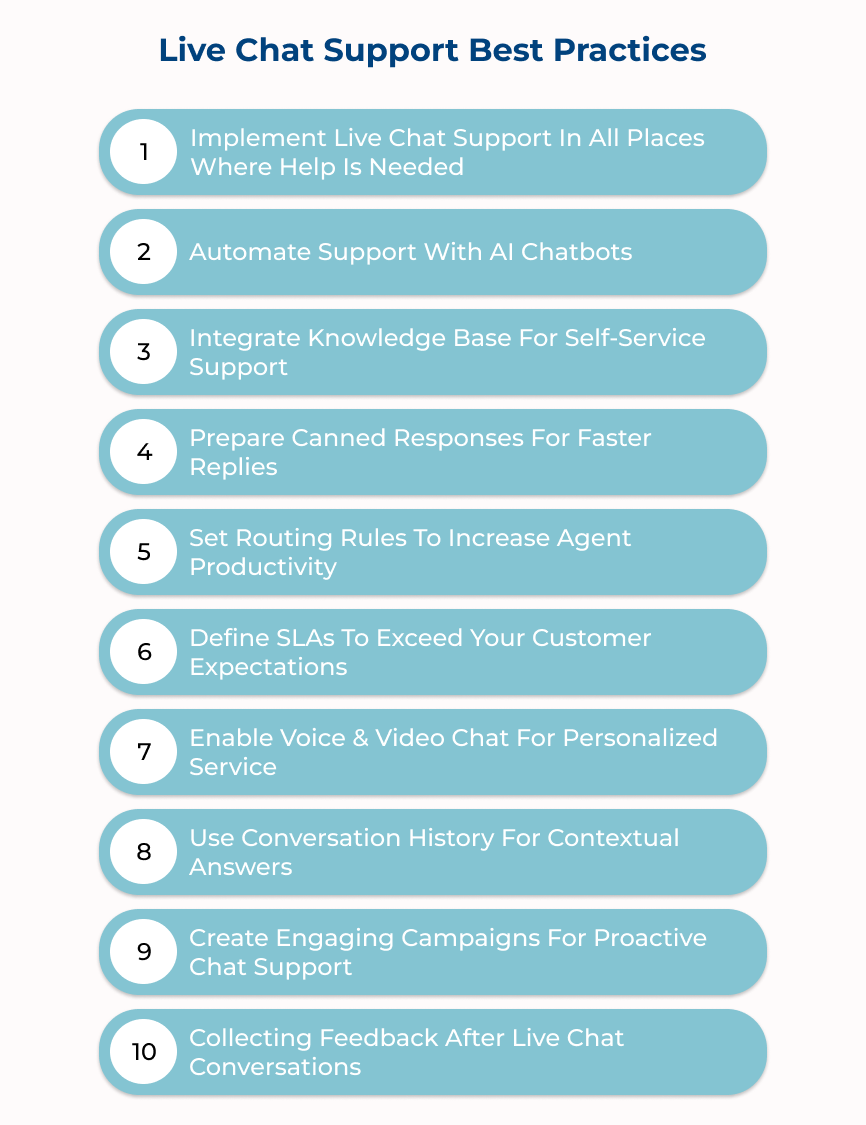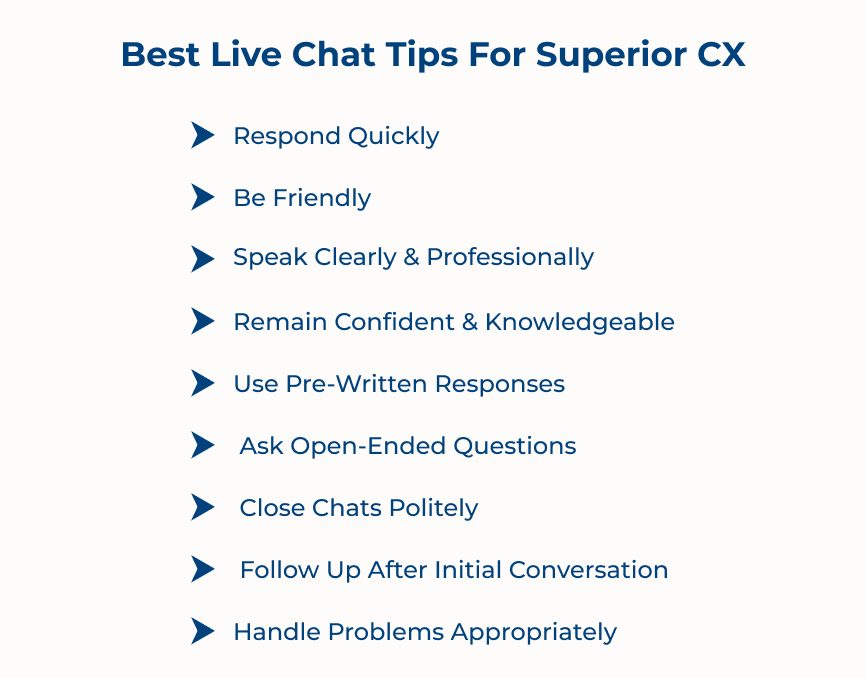• Respond quickly: Live chat customers expect answers within a few seconds to minutes. Make sure to always be prompt and reply within the same chat window of time, showing that you value their time.
• Be friendly: Always greet visitors with a warm welcome as soon as they enter the chat. Show them that you are friendly and eager to answer their questions.
• Speak Clearly & professionally: When answering their queries, use a polite but professional tone. Express yourself clearly by using simple, easy-to-understand language when responding to their inquiries.
• Remain Confident & knowledgeable: Show customers that you have the knowledge and experience necessary to effectively resolve their issues. Demonstrate confidence while speaking with them and remain cool even in complex situations.
• Use Pre-written responses: Live chat software often includes in-built templates for frequently asked questions which can help maximize your efficiency by allowing automated responses or quick copy/pasting of saved messages without having to manually type each response out each time.
• Ask open-ended questions: Asking open-ended questions will encourage conversation allowing for a deeper understanding of the issue at hand as well as giving insight into how customers think about their experience with your brand.
• Close chats politely: Don’t rush customers out; make sure that you close the conversation in a positive tone emphasizing your commitment to providing the highest levels of service possible.
• Follow up after initial conversation: After resolving a customer’s inquiry, follow up on subsequent conversations to make sure they’re satisfied with how it was handled and if there’s anything else needed from them before ending the conversation for good.
• Handle problems appropriately: If an unanswered query falls outside of your area of expertise or the customer appears dissatisfied with your response, ask if it would be possible for another member of staff or department to step in and provide further assistance where necessary.
What are the Real Life Examples of Live Chat Support?
Here are real-life examples of brands effectively using live chat support to better serve their customers.
1. Apple
Apple is known for its sleek and innovative products, but its stellar customer service is also a major part of its brand. Offering live chat support on their website helps Apple ensure that customers can easily get the help they need, be it troubleshooting a technical issue or making a purchase. It has helped Apple build a reputation for exceptional customer service and has solidified its brand as a company that truly cares about its customers.
2. Zappos
Zappos, an online shoe and clothing retailer, is famous for its exceptional customer service. One of the ways they have achieved it is by offering live chat support to their customers. Zappos representatives are available 24/7 to assist with any questions or concerns, leading to increased customer satisfaction. Other businesses can implement this by ensuring that chat support is readily available on their website and by training their customer service representatives to provide personalized and helpful assistance.
3. Airbnb
Airbnb revolutionized the travel industry by allowing people to rent out their homes to travelers. Airbnb offers live chat support on its website and mobile app to provide excellent customer service to both hosts and guests. It has helped Airbnb establish trust with their customers and has contributed to its strong brand reputation as a company that prioritizes customer satisfaction.
4. Warby Parker
Warby Parker, an online eyewear retailer, is known for its affordable and stylish glasses. Warby Parker offers live chat support to assist customers with any questions they may have about their products or services to further enhance their brand. The personalized approach to customer service has helped Warby Parker stand out in a competitive industry and has contributed to their strong brand identity.
5. Shopify
Shopify, a widely used e-commerce platform, offers live chat support on its website to help users quickly resolve issues and get answers in real-time. Direct, accessible support has played a key role in improving customer experience and building trust. Businesses looking to improve their own customer service can take a similar approach. Adding live chat isn’t just about convenience but about meeting customers where they are and responding when it matters.
Elevate Your Customer Experience (CX) with Live Chat Support
Live chat support is becoming increasingly popular as a tool for providing customer experience (CX). Customers can get answers and access to help quickly, without ever having to pick up the phone.
The support can significantly boost the level of customer service that you provide. It enables customers to find answers quickly and effortlessly by talking with agents on their own terms. It raises the level of quality of your CX and makes interacting with your brand more enjoyable for customers. The right tools and strategies will empower you to provide high-quality customer experiences every time.















